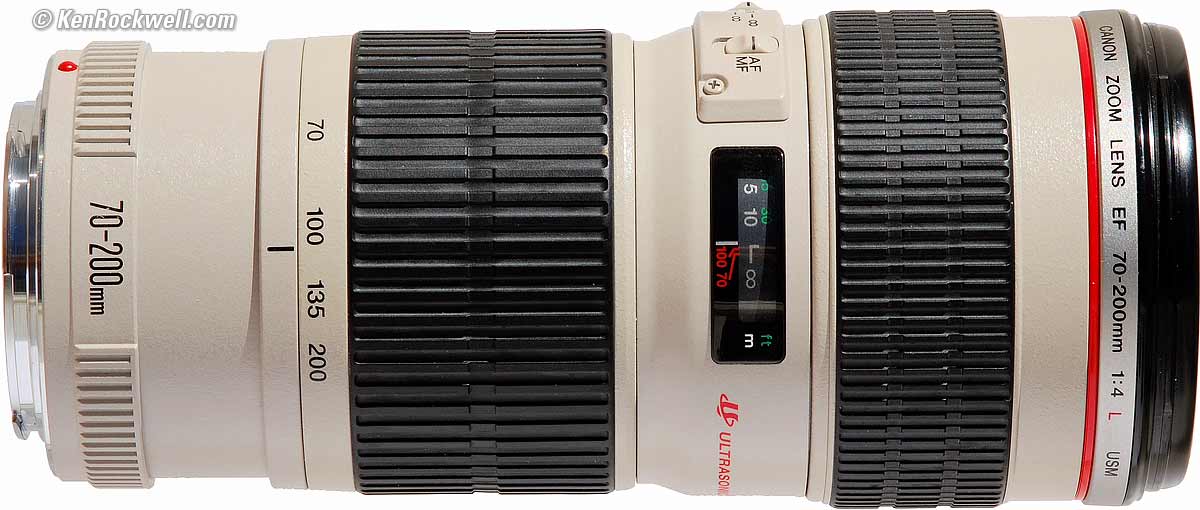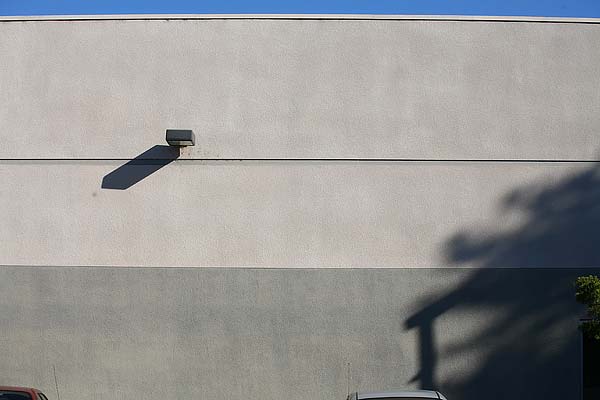Canon 70-200mm f/4 L
Full-Frame EF (1999 ~ 2021)
Intro Format Compatibility Specifications
Performance Compared Recommendations
Canon EF 70-200mm f/4 L (covers all formats, 67mm filters, 25.1 oz./711g, 4'/1.2m close focus, about $400 used if you know How to Win at eBay). enlarge.
This all-content, junk-free website's biggest source of support is when you use those or any of these links to my personally-approved sources when you get anything, regardless of the country in which you live. Canon does not seal its boxes in any way, so never buy at retail or any other source not on my personally approved list since you'll have no way of knowing if you're missing accessories, getting a defective, damaged, returned, store demo or used lens. Buy only from the approved sources I use myself for the best prices, service, return policies and selection. Thanks for helping me help you! Ken.
December 2021 Canon Reviews Canon Lenses Canon Flash All Reviews
70-200mm f/4L IS (2006-)
70-200mm f/2.8L IS II (2010-)
70-200mm f/2.8L IS (2001-2010)
70-200mm f/2.8L (1995-)
80-200mm f/2.8L (1989-1995)
100-400mm IS L II (2014-)
100-400mm IS L (1998-2015)
Introduction
Top Intro Format Compatibility Specs
Performance Compared Recommendations
|
I buy only from these approved sources. I can't vouch for ads below. |
Canon currently makes way more than four 70-200mm lenses. Take your choice of f/4 or f/2.8 and with or without image stabilization, and now for mirrorless or for both mirrorless and EOS EF.
This is the least expensive: the f/4 without stabilization.
This is the lens to get for daylight use where you want the lightest, least expensive tele zoom yet still want a fast and excellent lens. It is ideal for daytime sports because of its very fast focusing and great image quality. You don't need IS and don't need f/2.8 for action in daytime. Personally I'm addicted to IS for hand-held shots of still subjects in any light, so I bought the 70-200mm f/4 L IS version for myself.
That's about it. Canon makes this clear: get this if you want an easy-to-carry high quality tele zoom and can forego .
Good
● Instant manual-focus override.
● Excellent build quality.
● Fast focusing.
● Close close focus: 4 feet (1.2m).
● Inexpensive (for this class).
● Lightweight (for this class).
● Easy to zoom with one fingertip.
Missing
● No Image Stabilization.
Format
Top Intro Format Compatibility Specs
Performance Compared Recommendations
This is a full frame lens, and I'm reviewing it as such.
It works great on APS-C cameras, too, on which you may make the usual inferences, however for APS-C you might prefer the 55-250mm IS STM for half the price that adds Image Stabilization and a broader zoom range.
Compatibility
Top Intro Format Compatibility Specs
Performance Compared Recommendations
As an EF lens, this lens works with every Canon EOS DSLR and every 35mm Canon EOS (Autofocus) SLR made since 1987.
With the EF-M adapter it works with Canon's mirrorless EOS-M cameras.
Specifications
Top Intro Format Compatibility Specs
Performance Compared Recommendations
Name
Canon calls this the Canon Zoom Lens EF 70-200mm f/4 L USM.
EF: Electronic Focus. All modern Canon lenses do this.
L: Expensive as L.
USM: Ultra-Sonic Motor: The focus motor operates silently.
Optics

Canon 70-200/4 L USM construction. Fluorite and UD elements.
16 elements in 13 groups.
One fluorite element for extreme sharpness.
Two UD ultra-low dispersion elements, which help reduce color fringing.
Diaphragm
8 blades.
Stops down to f/32.
Focal Length
70 ~ 200mm.
Used on a 1.3x camera it sees angles of view similar to what an 85 ~ 250mm lens would see on a full-frame or 35mm camera.
On an APS-C camera it sees angles of view similar to what a 114 ~ 324mm lens sees on a full-frame or 35mm camera.
See also Crop Factor.
Angle of View
On full-frame:
34° 〜 12° diagonal.
29° 〜 10° horizontal.
19°30' 〜 7° vertical.
Focus Scale
Yes.
Infinity Focus Stop
No.
Depth of Field Scale
No.
Infrared Focus Index
Yes.
Close Focus
3.9 feet (1.2 meters).
Maximum Reproduction Ratio
1:4.76 (0.21 ×).
Filters
Plastic 67mm filter thread.
Hood
Case
Size
2.992" maximum diameter × 6.710" extension from flange, actual measured.
75.99 mm maximum diameter × 170.7 mm extension from flange, actual measured.
Weight
25.080 oz. (711.0 g) actual measured weight, lens only.
Rated 24.9 oz. (705 g).
Quality
Made in Japan.
Announced
September 1999.
Canon's Model Numbers
EF70-20040L.
2578A002. (2578A001 in Japan.)
JAN: 4960999-214207.
Price, USA
December 2021
About $400 used if you know How to Win at eBay.
June 2017
$599 new at at Adorama, at Amazon, at B&H and at Crutchfield.
About $475 used if you know How to Win at eBay.
April 2012
$710.
November 2011
$675.
March 2010
$640.
December 2006
$600.
Performance
Top Intro Format Compatibility Specs
Performance Compared Recommendations
Overall Autofocus Manual Focus Breathing
Bokeh Distortion Ergonomics Falloff Filters
Flare & Ghosts Flash Lateral Color Fringes
Macro Mechanics Sharpness Stabilization
Overall
The 70-200mm f/4 L is an easy lens to love. It just works.
Autofocus

It focuses by moving an internal lens group. Nothing changes on the outside.
Speed
AF speed is fast, regardless of the camera on which I use it.
Sound and Noise
It's almost silent in AF, sounding like plastic rattling on plastic. It goes so fast it snaps the insides around pretty quickly.
It sounds like plastic on plastic during manual focus.
Manual Focus
Easy: all it takes is one stiff fingertip. Manual focus overrides the AF instantly.
There's no need to flip the switch from AF to MF unless you want to.
Focus Breathing
Focus breathing is the image changing size as focused in and out. It's important to cinematographers because it looks funny if the image changes size as focus gets pulled back and forth between actors. If the lens does this, the image "breathes" by growing and contracting slightly as the dialog goes back and forth.
Breathing is a motion picture term which refers to what happens as you pull (change) focus from near to far. In movies we do this as the conversation goes from one actor to the next. As a viewer you don't notice it because your eyes are also going between actors, but if you pay attention, you can see focus move from near to far. There are people called focus pullers whose sole job is to do this.
It doesn't matter in still photography, but I still look for it.
Ideally nothing happens and the image size doesn't change when focus is pulled from near to far. This distracts audiences if the image changes size slightly as the conversation goes from actor to actor.
The image size does change as you focus with this lens.
Bokeh
Bokeh, the feel or quality of out-of-focus areas as opposed to how far out of focus they are, is good. It's very neutral.
Here is the background, at 15 feet, with the lens focused at 7 feet. These are the full images reduced to fit the screen.
 |
 |
Full image, 5D, 200mm at f/4 |
Full image, 5D, 200mm at f/5.6 |
Here's the same thing from the same position at 70mm. For each image I cropped the middle third (1,529 x 1,019 pixels from the 4,368 x 2,912 pixel image of my Canon 5D).
 |
 |
Central third, 5D, 70mm at f/4 |
Central third, 5D, 70mm at f/5.6 |
Distortion
Distortion is typical for a fast tele zoom: barrel at wide, pincushion at tele.Here's the proverbial Bad Photographers' Wall of Shame (f/7.1, 1/320, ISO 50):
At 70mm on a 5D. Roll mouse over to see after correction in Photoshop.
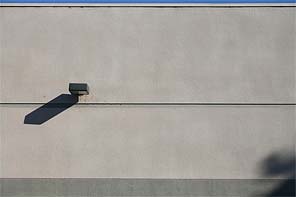 |
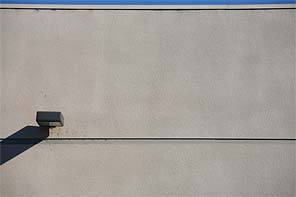 |
At 100mm, full-frame 5D |
At 135mm, full-frame 5D |
If you need low distortion without Photoshop, shoot at around 100mm. At 135mm it's almost as bad as at 200mm:
At 200mm on a 5D. Roll mouse over to see after correction in Photoshop.
Here are the results of my research. Plug these into Photoshop's lens distortion filter to correct the distortion. These figures are for you to enjoy in your photography. This is all © and registered, so you'll need permission to use these figures for anything else. Thanks! Ken.
50' (15m) |
|
70mm |
+2.0 |
100mm |
-0.25 |
135mm |
-1.5 |
200mm |
-2.0 |
The good news is that, like most tele zooms, it's trivial to correct if you have Photoshop CS2 or newer.
Ergonomics
Zooming is great. One touch from a fingertip is all you need, regardless of the direction in which the lens is pointing.
The zoom range is evenly spaced on the zoom ring:
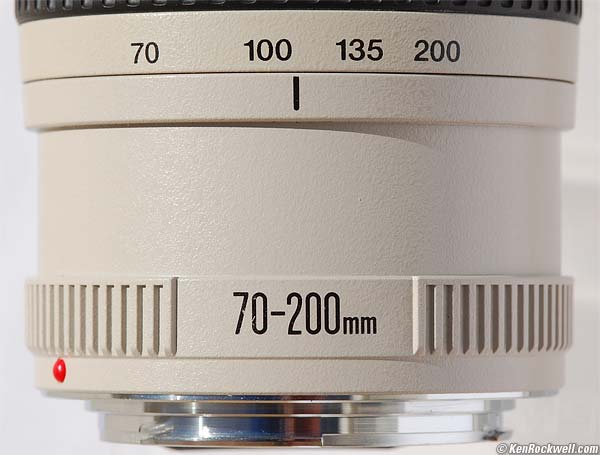
Focus Shift while Zooming
Focus shifts a little bit from one end of the range to the other. Be sure to focus after you zoom.
Focal Length Encoding
Compared to the indications on the zoom ring, 70mm was encoded as 70mm, 100mm was encoded as 98mm, 135mm was encoded as 131mm and 200mm was encoded as 200mm.
Falloff
Falloff is minor.
I've greatly exaggerated the falloff by shooting a gray field and placing these on a gray background:
Canon Falloff on Full-Frame and 35mm at infinity, no correction.
© 2017 KenRockwell.com. All rights reserved. |
Filters, use with
As a tele lens, there' no issue with what kind of filter you use, regular or thin.
Since the lens look relatively straight through the filter, instead of out the corners as a wide angle lens does, there's never a problem.
Go ahead and use your standard rotating polarizer and grad filters.
Flare & Ghosts
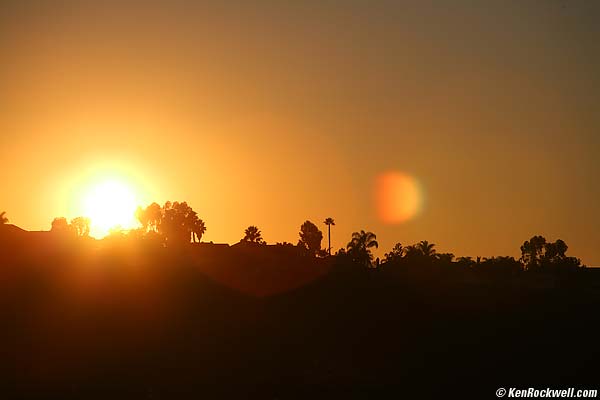
Ghost at 200mm, f/8 at 1/800, ISO 50, Canon 5D.
This is fairly typical of the 70-200mm f/4 L when pointed into the sun. It does the same thing with or without a filter.
This is a dangerously bright sun. This ghost probably wouldn't be visible if photographing an ordinary sunset.
If sunsets are your bag I'd try a different lens, or try this one carefully.
Flash, use with
Built-in flashes are often so close to the camera that some lenses can see far enough down to see their shadow cast by a built-in flash.
Even at its close focus distance of 4 feet (1.2m) I can't get any shadows from the built-in flash of my Rebel XTi.
Lateral Color Fringes
I don't see any. Lawn furniture photographers rejoice!
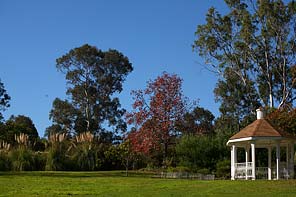 |
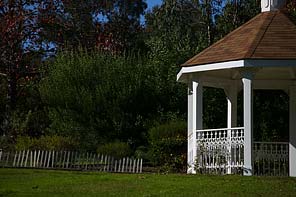 |
Full image, 70mm |
Full Image, 200mm |
 |
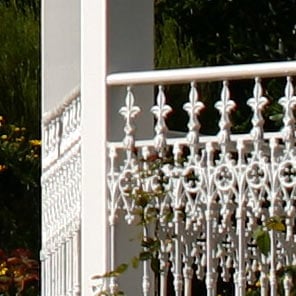 |
100% crop from 5D at 70mm |
100% crop from 5D at 100mm |
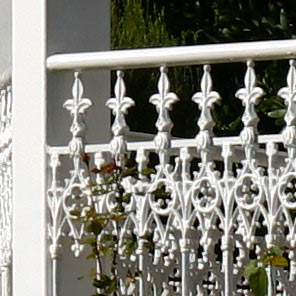 |
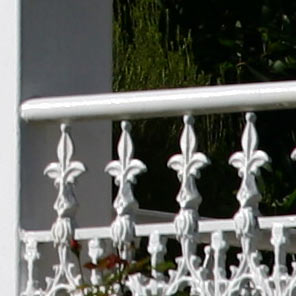 |
100% crop from 5D at 135mm |
100% crop from 5D at 200mm |
Macro
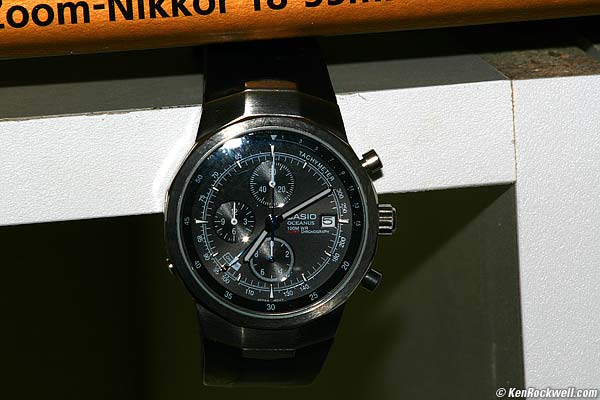
At 4' (1.2m), 200mm, full image from a Rebel XTi.
This is as close as it gets with a 1.6x camera. It will be less close with a 1.3x or full-frame camera. More at Crop Factor.
Mechanical Quality
It has no rubber gasket on the lens mount like the 17-40mm L and 16-35mm L have to keep blowing crud out of your camera.
Exterior
Metal.
Filter Threads
Plastic.
Switches
Plastic.
Mount
Metal.
Internals
Metal, or so I can gather peering into it.
Serial Number
The serial number is engraved on the outside bottom of the lens barrel, near the mount.
It is filled with black paint.
Noises when shaken
A lot of clunking (this is normal).
Made in
Japan.
Sharpness
The sample I borrowed needs to visit a service facility. It is out of alignment, so the entire left side is blurry at large apertures when tested. Therefore I'll skip my usual details until I get another sample.
For normal, three dimensional subjects, like people, it's very sharp, and you'd never notice a problem. Here's an example:
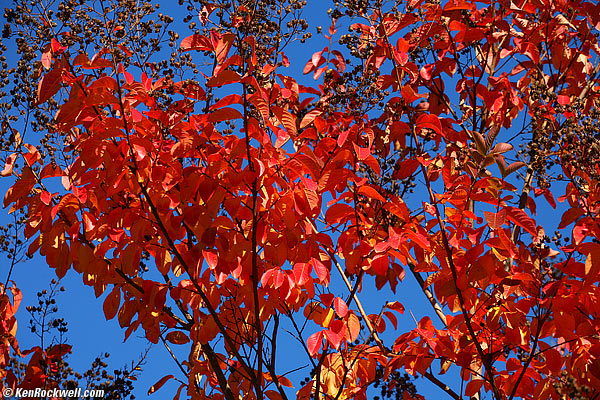
Red Tree, 70-200mm at 113mm, f/7.1 at 1/320, ISO 100, full image, Canon 5D.
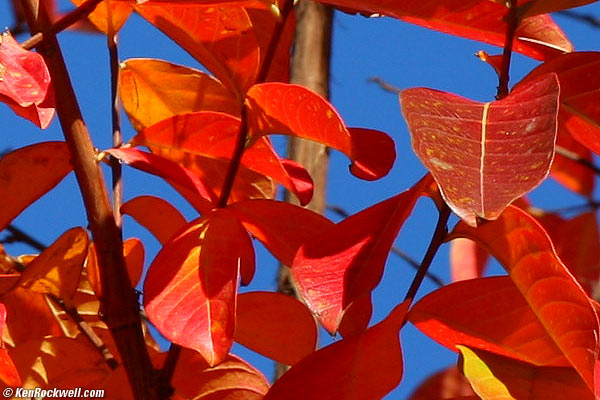
100% crop, sharpened, from center right of above.
This would print 44" wide at this magnification. How did I get these colors? Simply by being observant and setting my 5D's saturation to +2 or +3. It goes to +4. This is exactly how it came from the camera.

Canon's MTF charts at 10 cycles and at 30 cycles per millimeters at f/4 and at f/8.
Image Stabilization
This 70-200mm f/4 L has NO image stabilization.
There is another 70-200mm f/4 L IS and 70-200mm f/2.8 L IS that do have IS. They cost more and I prefer them.
IS does nothing if you're shooting moving kids and sports. It does everything if you're shooting still subjects in dim light without a tripod. I prefer the latter, so I love IS and would want one of the IS lenses.
If you're shooting action, this non-IS lens and I just saved you a thousand dollars.
TIP: In dim light, fire several shots and pick the sharpest. Blur is a random event, so if you fire enough shots, you'll eventually get a sharp one even at long speeds!
See also Why IS is Important.
Compared
Top Intro Format Compatibility Specs
Performance Compared Recommendations
Canon 70-200 Comparison Table.
Recommendations
Top Intro Format Compatibility Specs
Performance Compared Recommendations
This is a high quality, fast focusing tele zoom. Get it if you want a budget price for a super quality optic and can survive without IS or f/2.8.
This is an ideal lens for daytime sports because you don't need IS (Image Stabilization) or the f/2.8 speed of Canon's other 70-200mm lenses, and this one retains the super-fast focusing and excellent image quality you do need.
Be certain that you get a good one. Mine appears to have been dropped or otherwise misaligned. Go on top of a mountain and make some shots at f/4. Each side needs to be as sharp as the others. If they differ, something isn't straight inside the lens.
Personally I'm a slave to IS because I won't use a tripod, so for myself I bought the 70-200mm f/4 L IS version with IS.
The very best protective filter is the Hoya multicoated HD3 67mm UV which uses hardened glass and repels dirt and fingerprints, and is also multicoated.
For less money, the B+W 67mm 010 is an excellent filter, as are the multicoated version and the basic multicoated Hoya filters, but the Hoya HD3 is the toughest and the best.
Filters last a lifetime, so you may as well get the best. The Hoya HD3 stays cleaner than the others since it repels oil and dirt.
I'd get it at Adorama, at Amazon, at B&H or at Crutchfield, or used at eBay if you know How to Win at eBay.
This all-content, junk-free website's biggest source of support is when you use those or any of these links to approved sources when you get anything, regardless of the country in which you live. Canon does not seal its boxes in any way, so never buy at retail or any other source not on my personally approved list since you'll have no way of knowing if you're missing accessories, getting a defective, damaged, returned, store demo or used lens. I use the stores I do because they ship from secure remote warehouses where no one gets to touch your new camera before you do. Buy only from the approved sources I use myself for the best prices, service, return policies and selection.
Thanks for helping me help you!
Ken, Mrs. Rockwell, Ryan and Katie.
© Ken Rockwell. All rights reserved. Tous droits réservés. Alle Rechte vorbehalten.
Help Me Help You
I support my growing family through this website, as crazy as it might seem.
The biggest help is when you use any of these links when you get anything. It costs you nothing, and is this site's, and thus my family's, biggest source of support. These places always have the best prices and service, which is why I've used them since before this website existed. I recommend them all personally.
If you find this page as helpful as a book you might have had to buy or a workshop you may have had to take, feel free to help me continue helping everyone.
If you've gotten your gear through one of my links or helped otherwise, you're family. It's great people like you who allow me to keep adding to this site full-time. Thanks!
If you haven't helped yet, please do, and consider helping me with a gift of $5.00.
As this page is copyrighted and formally registered, it is unlawful to make copies, especially in the form of printouts for personal use. If you wish to make a printout for personal use, you are granted one-time permission only if you PayPal me $5.00 per printout or part thereof. Thank you!
Thanks for reading!
Mr. & Mrs. Ken Rockwell, Ryan and Katie.
